Smoking is the process of flavoring, cooking, or preserving food by exposing it to smoke from burning or smoldering material, most often wood.
Even if you use different fuel sources, the wood will be the source of the smoke. But you CAN choose what you use to ignite this wood, and it really matters for the taste and the ease of use.
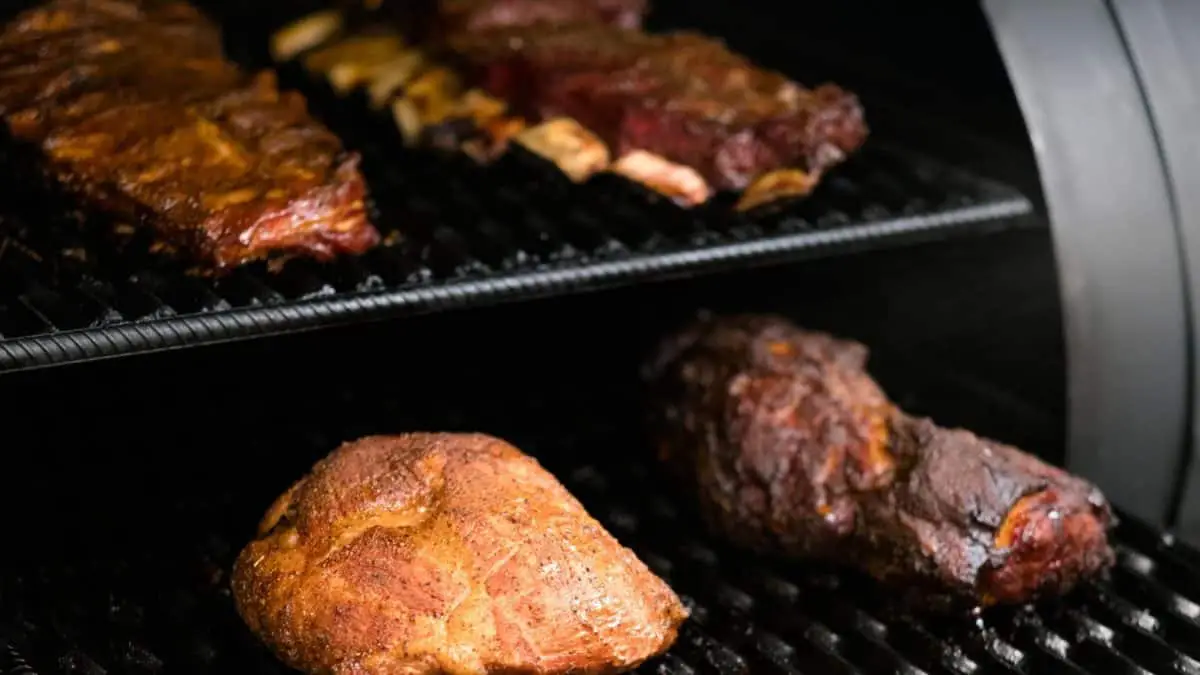
In this post we'll cover:
What is a BBQ Smoker?
A smoker is an outdoor cooking appliance that can maintain low cooking temperatures for extended periods of time while producing smoke and holding it around the meat for absorption.
Typically a good smoker should be able to do all this efficiently and has the necessary volume of space within it to yield the amount of smoked food that you need.
Smoking meat and food can be done in various ways and this is evidenced by the different types of smokers and smokers/grills that you can find on the market.
Among them include:
- Charcoal smokers
- Gas smokers
- Electric smokers
- Pellet smokers
Each of the smokers listed here has its pros and cons which is why it’s important that you select the right kind of smoker that suits your needs and budget.
Types of Smokers
- Vertical Water Smokers – these are the most popular type of smokers around. Vertical smokers have 3 main parts and those are the heat source which is located at the bottom, the water pan which is just above the firebox (the water keeps the meat from drying out if otherwise exposed to direct heat), and the smoking chamber where the meat is placed.
- Offset Smokers – an offset smoker has 2 parts and those are the main cooking chamber where you place the slabs of meat on the top of the grates, and the second part is the firebox (heat source). Offset smokers use metal plates with small, medium and large holes across the surface to “offset” the direct heat from the heat source and evenly distributes that heat inside the cooking chamber.
- Box Smokers – also known as vault smokers, cabinet smokers, block smokers are designed like a vertical smoker, except that they’re in a rectangular form and are like ovens with a heat source from underneath.
- Drum Smokers – the good thing about drum smokers is that you can buy them fully assembled or you can do it yourself. They’re essentially an oversized open vertical smoker.
- Smoker Ovens – smoker ovens works like your household oven, except that they have intelligent controls that allow you to smoke a brisket while you go to work.
- Kamado Grills – this type of grill is perfect for low and slow cooking (smoking) and has since become a very popular grill in the United States since WWII.
- Pellet Grills – Pellet grills use wood pellets as fuel, which is all-natural hardwood sawdust compacted and extruded into small 1/4-inch round pieces. They look very similar to offset grills with one exception and that is they use wood pellets as opposed to charcoal briquettes or chopped wood.
How much does a smoker cost to operate?
The price range for smokers is huge. In some cases, you can find budget smokers for as little as $100 whereas big brands with the best quality smokers can run up to $5000.
It all depends on what you’re looking for and what the smoker is made of. Electric smokers are the cheapest to operate while propane/gas smokers are the most expensive.
Let’s look at some estimative prices for each type of smoker:
- Charcoal smokers cost on average between $0.50-1.00 to run per hour
- Propane smokers cost on average between $0.40-1.00 to run per hour
- Pellet smokers cost on average between $1.20-1.60 to run per hour
- Electric smokers cost on average between $0.20-1.00 to run per hour depending on local electricity rates
| Smoker type | Purchase price range (average) | Cost to operate / per hour (average) |
| Vertical smoker | $150-800 | $0.50 -$1.00 |
| Offset smoker | $150-1000 | $0.50-$1.00 |
| Box smoker | $170-500 | $0.40-1.00 |
| Drum smoker | $50-400 | $0.50-1.00 |
| Smoker oven | $500+ | $0.50-1.00 |
| Kamado / ceramic smoker | $250-4000 | $0.50-1.00 |
| Pellet smoker | $300-1000 | $1.20-$1.60 |
| Electric smoker | $150-1000 | $0.20-1.00 |
| Smoker type | Images |
| Best vertical smoker: Sougem Charcoal Smoker Grill |
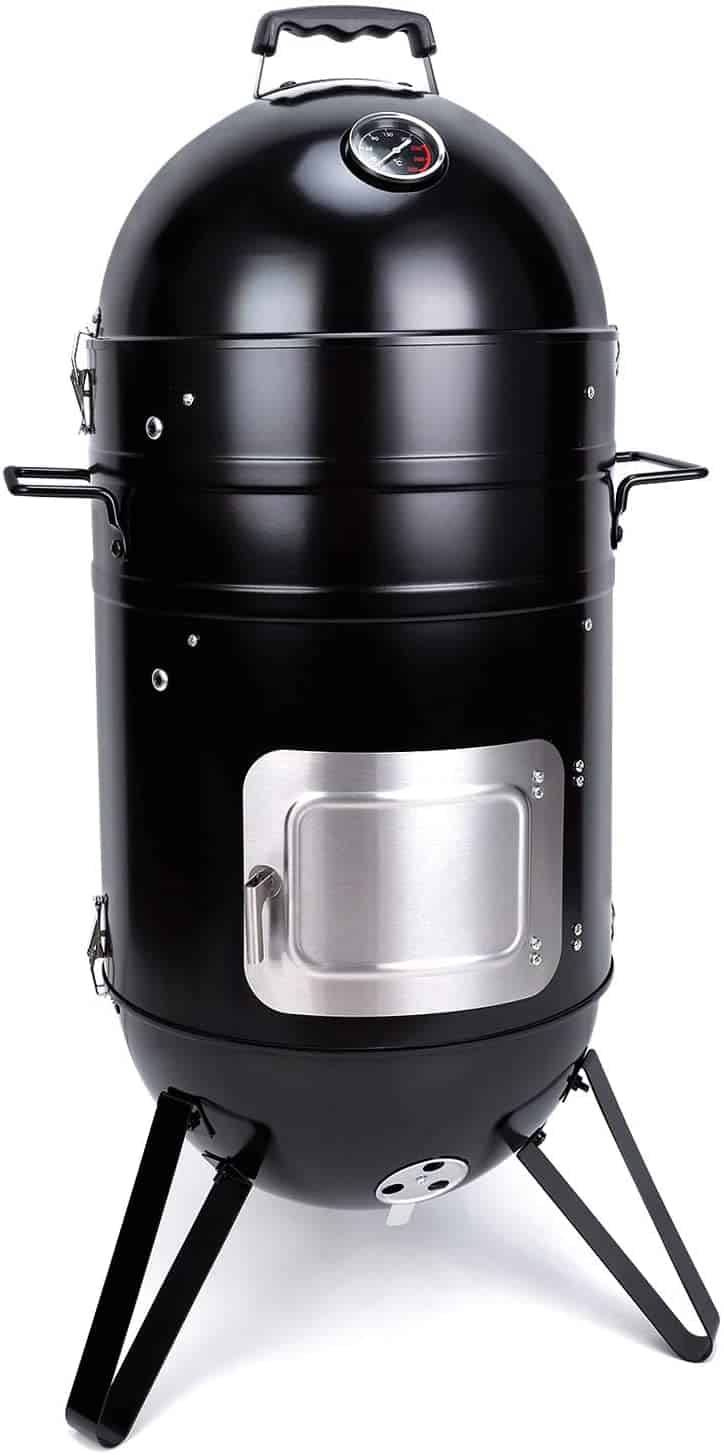 (view more images) |
| Best offset smoker: Char-Broil Oklahoma Joe’s Highland Offset Smoker |
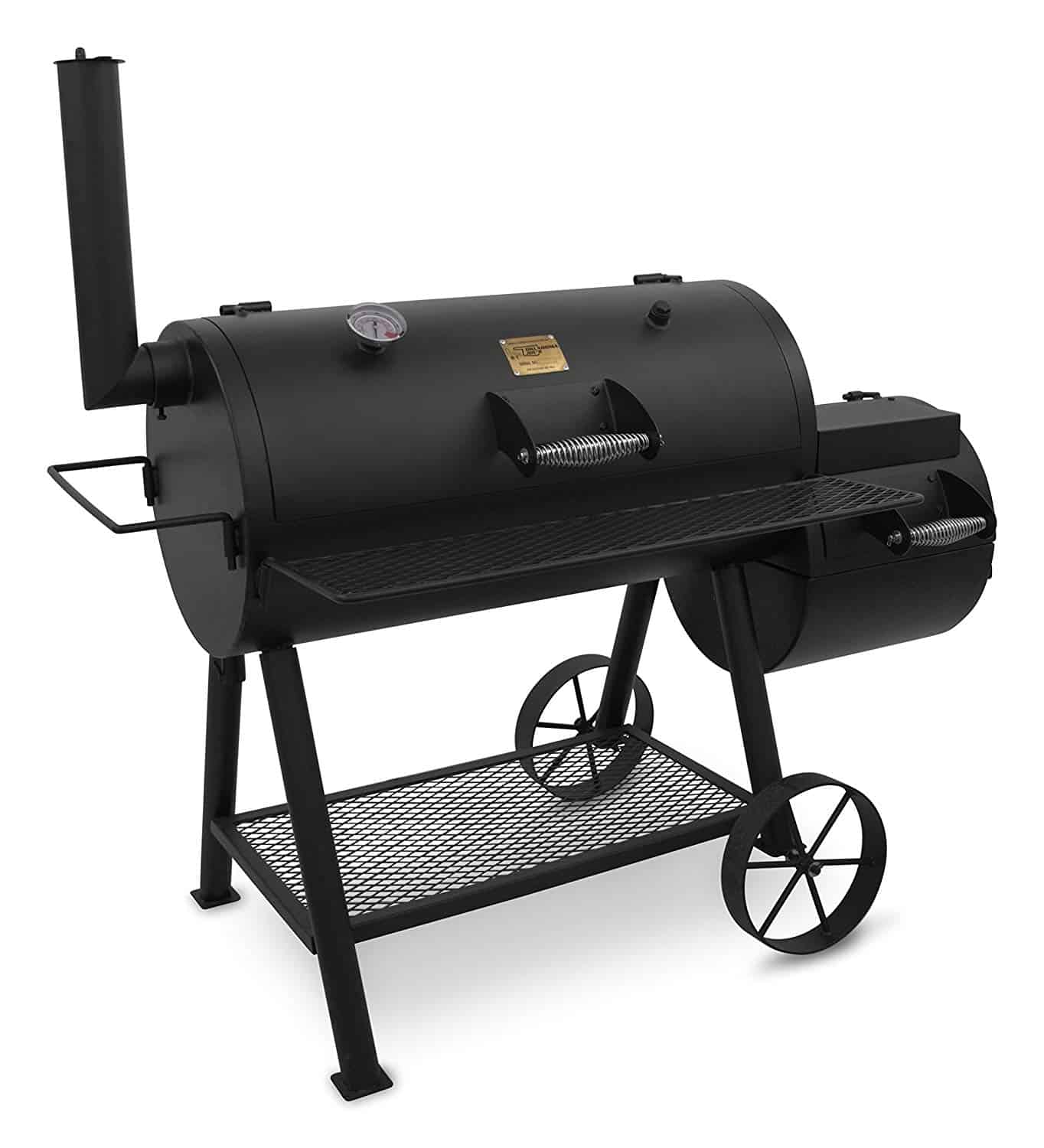 (view more images) |
| Best box smoker: Camp Chef Vault Smoker |
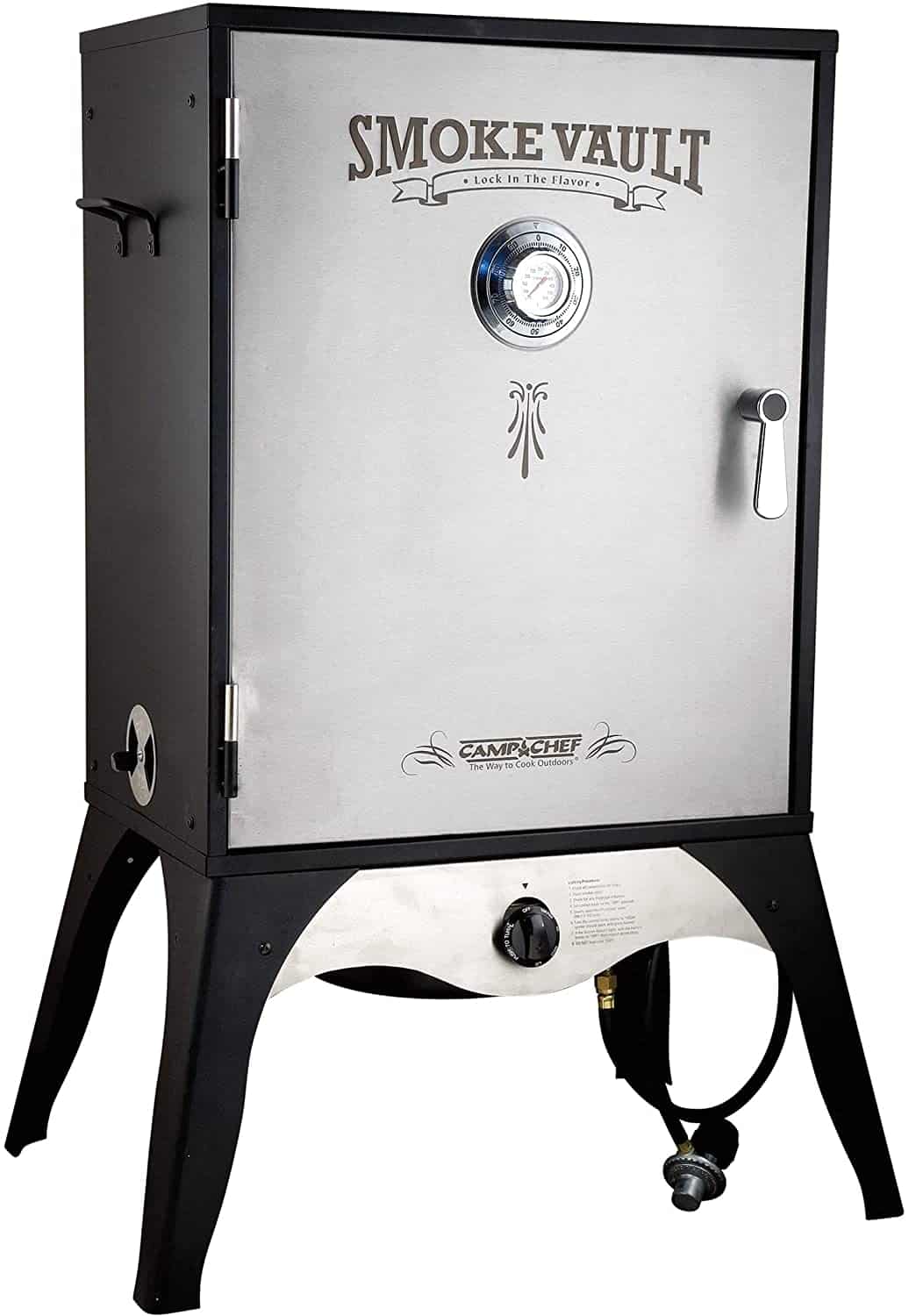 (view more images) |
| Best drum smoker: Pit Barrel Cooker Classic Package |
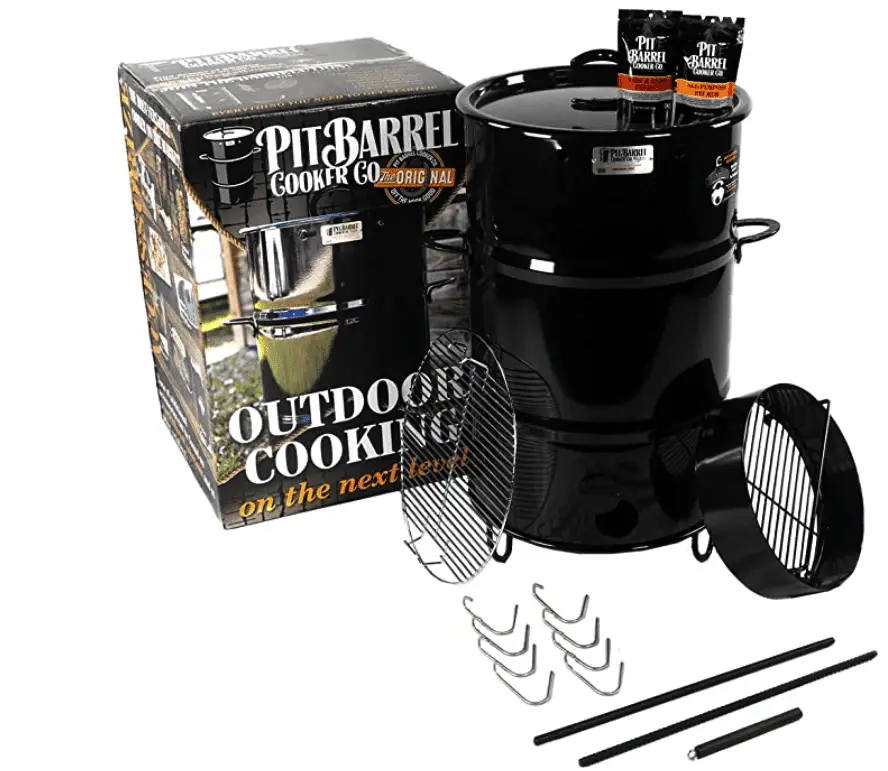 (view more images) |
| Best smoker oven: Cookshack Smokette |
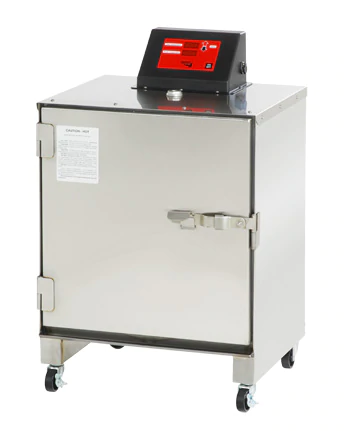 (view more images) |
| Best Kamado smoker: Kamado Joe BJ24RH Big Joe |
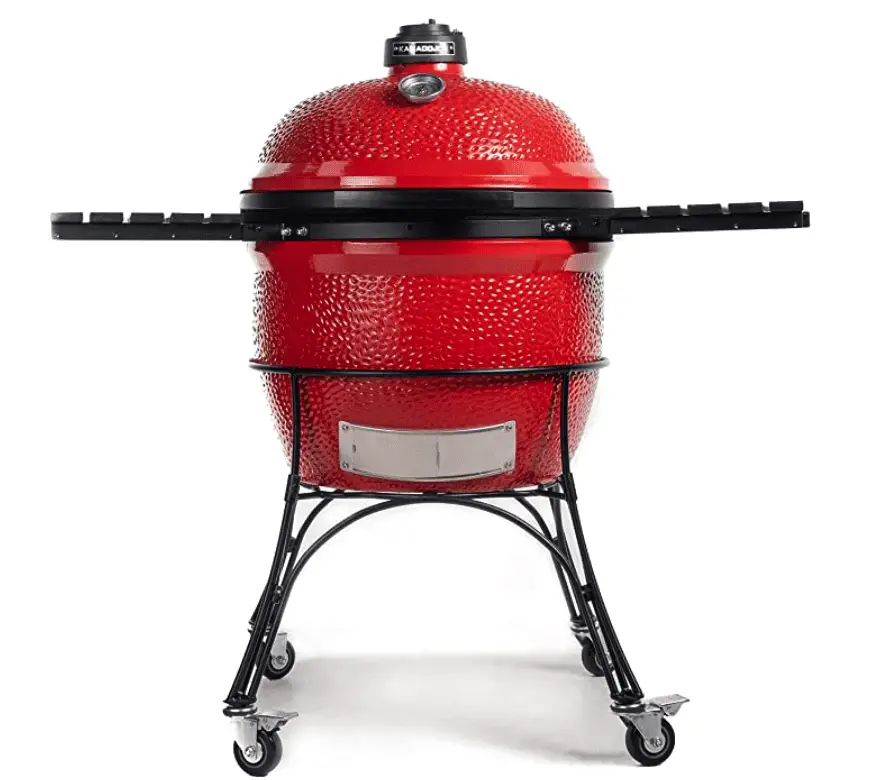 (view more images) |
| Best pellet smoker: Pit Boss 71820FB BBQ Pellet Grill and Smoker |
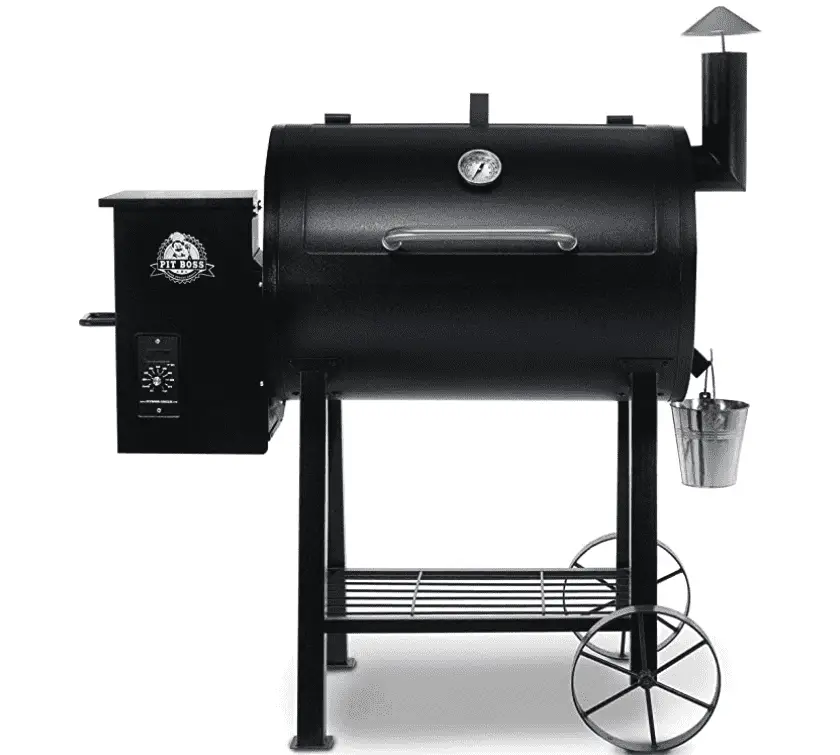 (view more images) |
| Best electric smoker: Masterbuilt MB20071117 Digital Electric Smoker |
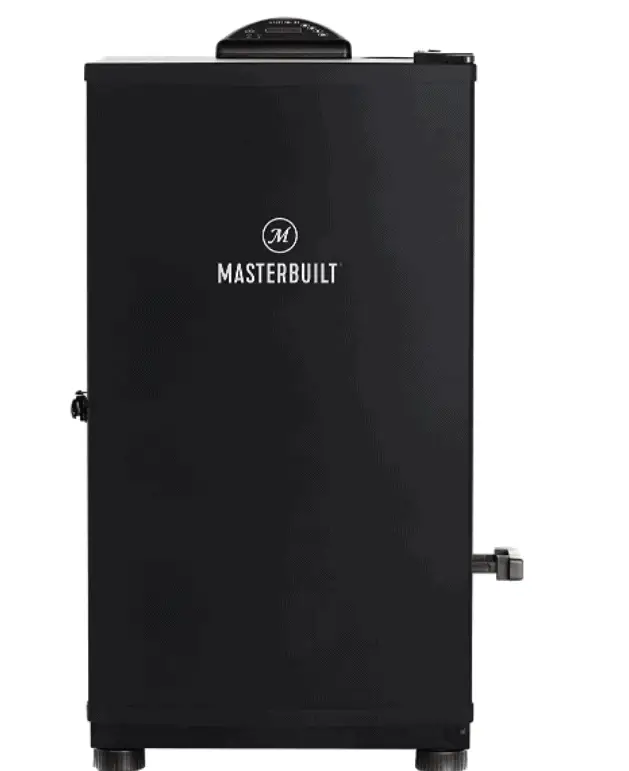 (view more images) |
BBQ Smoker Fuel Types
There are different kinds of smoker grills available in the market and they come in all shapes and sizes. Also, they come with different price tags.
I can’t really tell you which type is the best because, you know…
…it depends
But I’ve created a list explaining each type of smoker and what the pros and cons are so that’s sure to help you out in making your decision.
Charcoal burning smokers
Even though charcoal smokers are very affordable and also provide great flavor to your food, they are still not superior to all-wood smokers.
When it comes to charcoal smokers, you’ll have to monitor the temperature carefully and add more charcoal, but you might also have to make adjustments to make sure the temperature is kept stable.
A good way to accomplish this is to follow the method we’re about to share.
To use the Minion Method, you have to light a certain quantity of charcoal in the chimney, but keep in mind that this will depend on multiple factors, like wind speed, precipitation and the outside temperature. If it’s a sunny day outside, you can use twenty charcoal briquettes.
On the other hand, if it’s windy or cool, between twenty to forty should be enough. If it’s a cold or rainy day, then it should be between forty to sixty briquettes.
As soon as it’s possible to take the charcoal out of the chimney, place it on the unlit charcoal and make sure the pan has enough water so you can finally place your meats there.
And to control the temperature, remember to configure the vents as needed.
By doing this, you can produce burn times of up to eighteen hours with little to no interaction from you at all.
Generally, this method is fantastic for when you need to cook for more than 6 hours and the best part is that it doesn’t affect the flavor or smokiness of the meat.
If you don’t have one yet, get yourself one of these smoker chimney starters that will make your life a lot easier
How to get the best charcoal smoker for you
- Make sure you get a smoker with a good temperature control system. This will depend on your experience, the thermometers in the unit, the possibility to adjust the distance between the coals and the food, the lid, and the dampers.
- Get a smoker with a tight-fitting lid and with a minimum of 2 dampers on it, including an intake and an exhaust.
- Your smoker needs to include a digital thermometer since the food’s internal temperature is extremely important to the final product’s taste. Even if they seem a bit pricey, they’re a great return on investment.
- Make sure you’re able to use two-zone cooking.
- Check that it lets you easily access the charcoal so you can control the temperature inside the grill with no problems
Gas smokers
These BBQ smokers tend to be very easy to use and offer great portability, but you’ll have to keep your eyes on it so you don’t run out of gas before your food is done.
What actually makes them special is that it’s extremely easy to set the right temperature and keep it consistent, so you can set it and forget it until everything is done.
It also lets you add wood chips for that smokey flavor and you can easily add more throughout the smoking process.
How to get the best gas smoker for you
- If you simply want to cook burgers and hot dogs, you’re good to go. However, if you want to roast or smoke something like a whole chicken then you’ll need a rotisserie attachment.
- Make sure you check the grill’s BTU since it can tell you how much gas the unit will use and how much heat it can produce. Just remember that a higher BTY doesn’t necessarily mean faster or better cooking.
- Get a stable grill. Test it by pushing it from various angles and observe if it tips around or not. Also, check the shelves, firebox and lid for sharp edges. Finally, try to grip the handle and make sure your hand won’t end up close to the lid so you don’t get burned.
Electric smokers
Just like its name implies, electric BBQ smokers rely on electricity in order to smoke, so you won’t need to worry about any additional fuel source.
This means that you can use it anywhere you have access to an electric outlet.
You’ll just need wood chunks or chips placed near the heating area in order to create smoke. And depending on the model, it might feature exact temperature controls.
However, it’s not a deal-breaker if it doesn’t have one since you’ll still need to get your own high-quality thermometer.
Their best attribute is that you can never mess up, but their downside is that the smoked foods won’t taste as good as the traditionally-smoked ones.
How to get the best electric smoker for you
- Make sure you get a grill with thick seals, metal, and insulation since it will distribute the heat evenly around the cooking chamber and radiate it back. Always choose steel smokers.
- Get a BBQ smoker that has rust-proof and waterproof paint and that has large hinges and latches.
- If you want to caramelize sauces, can the smoker get to 500° F in order to caramelize or sizzle them?
- Make sure it has a damper on the chimney and another one on the firebox. This creates a tight seal that is easy to operate and reach.
- It’s always useful to get a model that features a built-in table, which can come in handy when you need to put sauces, cutting boards and other tools on them.
- Do your research on the smoker’s seller and dig into their warranty.
- Make sure it’s both pet and child safe if you have any. Remember that this is plugged into an outlet so there’s an additional risk.
- Consider the space you’ll have available to place it since you need enough space around it to avoid possible fires.
Pellet smokers
Pellet grills use wood pellets as fuel. The wood pellets are made from all-natural hardwood sawdust compacted and extruded into small 0.25-inch round pieces.
Back in the day when people would still cook meat over split logs they really enjoyed the rare and unique taste of meat smoked over high-quality hardwood.
Burning hardwood now can be a hassle, especially if you live in the city, but if you have a pellet grill it wouldn’t be a problem!
You can keep enjoying delicious meat cooked over high-quality wood – even if they’re made into pellets these days.
Advantages of the pellet smoker
A pellet smoker can be used for both grilling and smoking meat and the smoke that hardwood pellets produce is of good quality that makes any meat very tasty.
They’re easy to operate, especially those that belong to the high-end brands that have advanced computer controls with them.
These grills have a large cooking space that allows you to cook more meat at a time compared to other grills.
They’re also affordable with a price range between $250 to just over $1,000.
The disadvantages
Because they have many moving parts they are susceptible to wear and tear, and once a moving part breaks down, then the whole machine will cease to function.
To give you an example, the electric motor can malfunction via a shortcircuit failure and burn the coil wounds.
Also if the warranty does not cover these kinds of problems, then you will be forced to pay out of pocket to repair your grill.
Another issue that these types of smokers have is that not all of them have a smooth finish to their products like Traeger does.
In fact, half of them are made by small companies, who probably just assembled their products in their garage, and are not financially endowed to create aesthetically pleasing pellet grills.
The maximum temperature that these grills produce is around 260° Kelvin and may not be ideal for barbecuing meat.
Why are pellet grills expensive?
The igniters and firepots where pellets are burned are made to be durable because they are used over and over again.
Essentially, the pellet grill is made of high-quality and durable components. You are paying for a good build, design, and efficient cooking.
Why are pellet grills so popular?
The pellet grill is very appealing to expert smokers. Its biggest pro is that maintains a low and steady temperature for hours on end.
You don’t even need to make any adjustments and you don’t need to keep checking it. It’s the best smoker for precision cooking.
You can make delicious brisket, slow-smoked ribs, and even pulled pork without drying out your meat at all. So, the food stays juicy and tender.
What type of smoker gives the best flavor?
The pro pitmasters prefer to use charcoal smokers, usually offset smokers to give their meat the best smoky flavor.
Wood is the best fuel source for smoking food.
Aaron Franklin, for example, uses an offset smoker he designed himself. But you can use any type of charcoal offset smoker if you want authentic Southern-style smoky BBQ.
You’re probably wondering why the charcoal smoker is the best?
Offset smokers use indirect heat and smoke to cook almost anything slowly and to perfection using a basic set-up in which a smaller pipe or box houses the fire and feeds smoke through holes into the larger cooking pipe or box.
On the competitive barbecue circuit, offset smokers are an essential tool. The smoke from real wood chips combined with the smoke of the burning charcoal is hard to beat.
Gas and electricity just can’t give the exact smoky aromas that charcoal can.
Pellet smokers are second best because pellets are also made of wood and thus the flavors are similar.
Why choosing the wrong smoker can affect the taste of the meat
Because not all smoker grills function in the same way, your smoked meat might not be what you’ve anticipated it to be.
This is why it’s so important to also choose the right smoker grill. After all, it’s about more than simply relying on your smoking skills.
Of course, there’s a lot to say about different types of smokers. In this post, I’d like to take you through the different choices.
There are several things to consider when using a smoker.
The first thing to consider is fuel. The options are charcoal, wood, gas, infrared, or electric heating.
Then, you need to factor in how well the meat is smoked and the amount of time required.
How you smoke the meat relative to the type of smoker you’ve selected to smoke them in is probably the most crucial factor that can either create the best-smoked meat or ruin it.
But before we go into that discussion, let’s first find out what the different kinds of smoker grills that are available on the market.
Conclusion
There are a lot of different options to choose from when you want to get into smoking and it can seem a little confusing at times, but I hope this guide has helped you on deciding which fuel type might be most suitable for your first buy.

